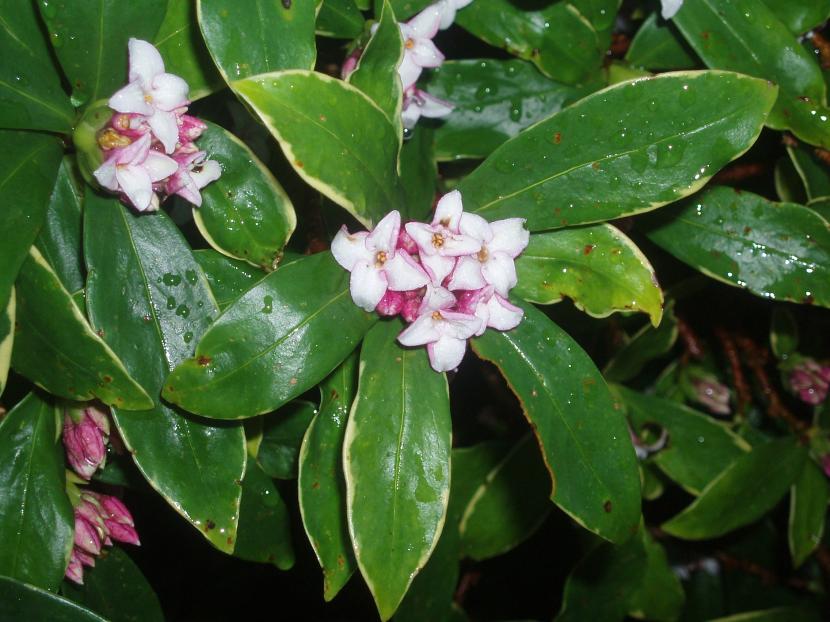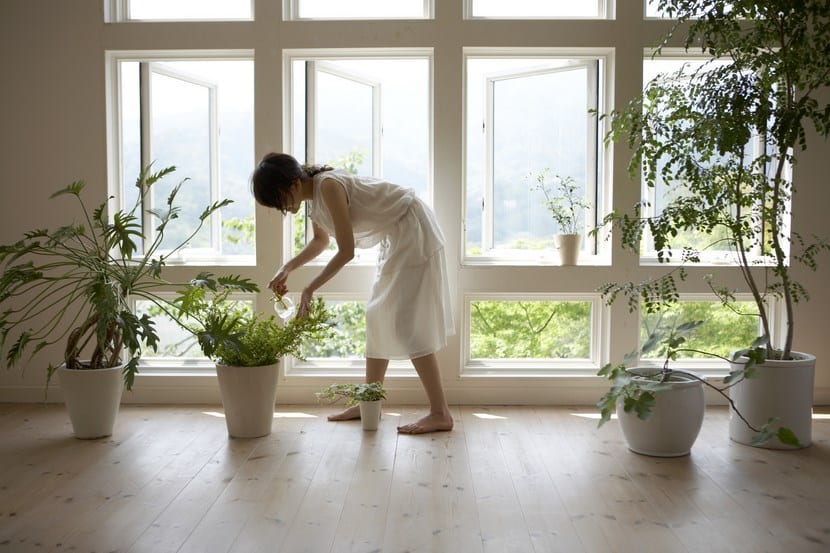
Image - Flickr / ionea.
How to care for plants? It is a question that we all ask ourselves when we start gardening, and also one of those that can bring us the most satisfaction. And there is nothing like knowing the varieties that interest us to provide them with the best possible care. Also, if we take photos of them, we can see how they grow as time goes by.
Because plants, although they often give the impression that they do not move, in reality they do, because growth implies that cells divide, and for that they have to move. So that, what better way than to start by putting a few tricks into practice that, we hope, they serve you to take care of your beloved plants.
Have illusion
The first and most important thing that, I think, should never be lacking is illusion. Illusion to learn, to improve, to provide plants with care that will be more and more appropriate. It is important that we enjoy taking care of them, because otherwise it would mean that we are not really interested or that we prefer to do other things.
But if we do, then we can get down to business.
Make sure they don't lack light

All plants need light, since it is essential for them to photosynthesize and thus grow. The lack of it will make them ethiolate, that is, that the stems bend and even lengthen in the direction of the most intense light they find.
There are some that are lovers of direct sun, such as sunflowers, the vast majority of succulents (cacti and succulents), carnations or many trees, such as olive trees or Ficus. For this reason, it is not advisable to grow them in the shade, as they will eventually weaken and die.
Now, there are many varieties that want shade (but not darkness; they must always be in an area where there is a lot of light), and there is a vast majority that can be cultivated as inside plants, such as: tropical ferns (Asplenium nidus, Davallia, Nephrolepis, Pteris), Philodendron, Monstera, zamioculca, Kentia or Howea forsteriana, etc.).
Plant them in larger pots whenever necessary
One of the most common mistakes is buying a plant and never changing it pot ever, or very rarely in its life. When the plants arrive at the nursery, ready for sale, they are almost always very well rooted. This is done this way because once someone buys them, as long as it is the right time, they can transplant it to another pot or to the ground without problems.
But of course, if they are left in those containers for much longer, since they have run out of space to grow some, what they do is grow upwards in an exaggerated way, as if they wanted to get out of the pot. Others, such as trees and palms, stop their growth and gradually die.
In order to avoid this, whenever you see a plant with roots poking out of its pot's drainage holes, or If at first glance you see that it has run out of space to continue growing, then plant it in a larger one, or in the ground. The ideal time is late winter, or if it is plants grown indoors in spring, when it has settled.

They do not bloom better in narrow pots

Image - Wikimedia / Fanghong
There is a belief that a plant that is grown in narrow pots will grow and bloom better than if it is in a wide one. For example, this is said a lot about clivia and elephant legs (Beaucarnea recurvata).
I myself have these two varieties in the garden, and it was planting them in the ground and seeing how they grew faster and healthier. And is that a narrow pot only slows down growth, as the roots fill it up fast.
The plant will flower, of course, but to flourish it needs space for its roots, and also nutrients, which in a small container are soon scarce; so it is more than likely that it will only produce flowers one year, maybe two.
Irrigate with water without lime, or with little
In many parts of the world, such as the island of Mallorca for example, the water that comes out of the tap has so much, so much lime that the pipes have to be checked frequently. If a plant is watered with it, It doesn't take long until you see the flowerpot or the leaves with dots or even white spots.
This is not a problem for some species: olive trees, wild olive trees, thyme, almond trees, etc .; but those that are grown indoors and acidophilic ones (heather, camellias, magnolias, gardenias, azaleas, among others) yes, because high concentrations of lime clog the pores of its roots, increase the pH of the water and the soil, and consequently, some nutrients such as iron and / or manganese are blocked, not available to them.
But don't worry, because you can do several things to remove or reduce limescale water, such as getting a water softener that is screwed directly onto the tap.
Treat plants with diatomaceous earth to avoid pests
La diatomaceous earth it is a natural product, which could well be confused with flour. It is very light, so much so that you should avoid applying it on days when the wind blows a lot. What's more, leaves no residue, and is very safe for both humans and animalsexcept for small insects or parasites.
I have been using it as much as to prevent and eliminate pests of all kinds: mealybugs, aphids, spider mites, thrips, ants, ... even for fleas! For it, what I do is wet the plant with water, and then add diatomaceous earth, as if adding salt to the salad. In the video you have more information about it.
Take care of your plants with organic products
It is best to use products that respect the environment. If we use a fertilizer, a chemical, we could run the risk of harming beneficial insects, such as bees or butterflies, since when they go to drink nectar or feed on pollen, they could become poisoned and die.
Be careful, I am not saying that you should not use insecticides or chemical fertilizers, but that whenever it can be avoided, it will be preferable to do so. And is that It is possible to easily get products authorized for organic farming, and that are useful. We just told you about diatomaceous earth, which is an excellent natural insecticide, but there are many others: potassium soap, neem oil (for sale here), nettle slurry, even sticky traps (for sale here) are useful for the control of flying insects.
If we want to pay them with organic fertilizers, we have the classic compost, herbivorous animal manure, seaweed fertilizer (for sale here), and / or banana and egg peels, among others.
Clean the leaves of your indoor plants with milk

Did you know that milk can help your indoor plants regain their natural shine? Every time you see them with powder, it is very interesting to clean them with milk. It is a very simple homemade trick, with which your pots will be resplendent.
And it is that every day the specks of dust accumulate ... wherever they fall. You don't see much in the furniture, but you can see it in the plants. It can also harm them, since if a large amount accumulates on the surface of their leaves, they would have trouble breathing and turn brown. Because, it is good to clean them once a week.

Thus, with these homemade tricks, you can take care of your plants like an expert.